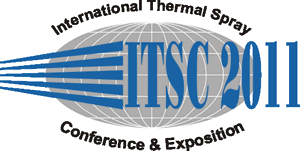
|
2736 |
|
Wednesday, September 28, 2011, Saal C2.1 2:00 PM Modeling & Simulation 2 |
|
Performance analysis and modeling of thermally sprayed resistive heaters |
|
Jean-Michel Lamarre* / NRC-IMI, Canada Pierre Marcoux/ Thermoscience Enercoatings Inc., Canada Michel Perrault/ NRC-IMI, Canada Richard C. Abbott/ Thermoscience Enercoatings Inc., Canada Jean-Gabriel Legoux/ NRC-IMI, Canada |
|
Many processes and systems are requiring hot surfaces. These are usually heated using electrical elements located in their vicinity. This solution is however subjected to intrinsic limitations associated with heating element geometry and physical location. Thermally spraying electrical elements directly on surfaces can outcome these limitations by tailoring the geometry of the heating element to the application. Moreover, the element heat transfer is maximized by eliminating the air gap between the heater and the surface to be heated. This paper is aimed at modeling and characterising resistive heaters sprayed on metallic substrates. Heaters were fabricated using a plasma-sprayed alumina dielectric insulator and a wire arc and/or wire flame sprayed iron-based alloy resistive element. Samples were energized and kept at a constant temperature of 500°C for several days. SEM cross-section observations revealed the formation of cracks at very specific locations in the alumina layer after thermal use. Finite element modeling shows that these cracks originate from a mismatch of thermal expansion coefficient and that their location can be predicted according to the considered geometry. The simulation model was refined using experimental parameters obtained by several techniques such as: emissivity and time-dependant temperature profile (infra-red camera), resistivity (four probes technique), diffusivity (laser flash method) and mechanical properties (micro and nanoindentation). Several parameters were evaluated in order to lessen crack formation such as: substrate and heater material choice, alumina thickness and element geometry. |